Mote Coral Reef Restoration Crab Hatchery opens – here's why that matters
A key cog in the restoration of the Florida Reef Tract – Mote’s Florida Coral Reef Restoration Crab Hatchery – formally opened Monday, even as a portion of the facility is being used to house corals rescued from a mid-July potentially devastating underwater heatwave.
The hatchery is the first of its type and once it reaches full production is projected to produce roughly 250,000 Caribbean king crabs a year, or 2.8 million over the next 10 years.
The crabs will be released at seven iconic reef sites targeted by the National Oceanic and Atmospheric Administration for Mission Iconic Reefs, a $100 million plan to restore coral cover at those sites on the ecologically important Florida Reef Tract.
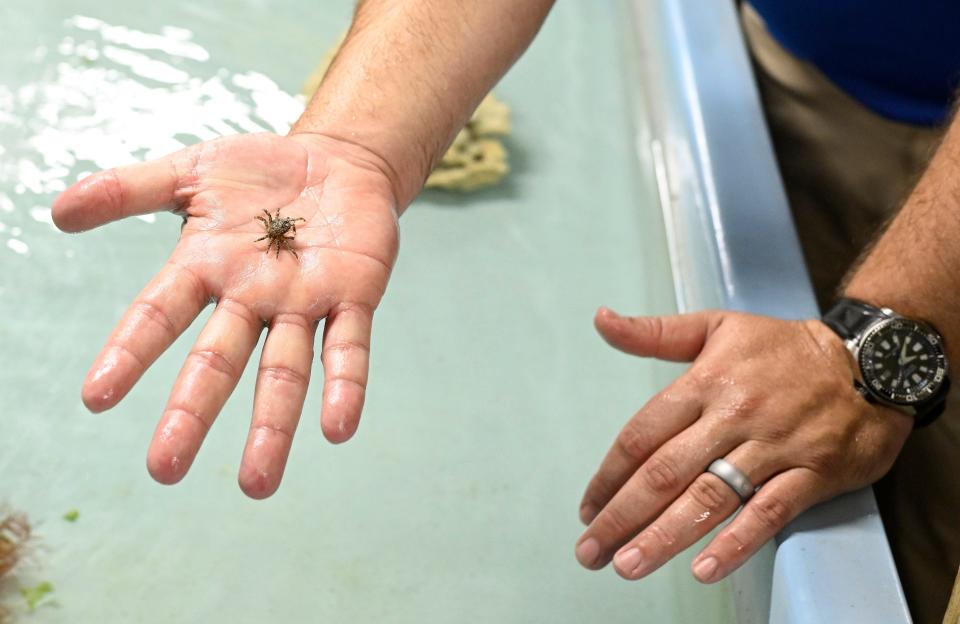
Michael Crosby, president & CEO of Mote Marine Laboratory & Aquarium, noted the historical and ongoing efforts in coral restoration, shark and stone crab research and red tide mitigation undertaken by the almost 70-year-old nonprofit Monday, when he said, “We’re very very proud to again answer the call to use innovative science to help deliver what is needed to restore and sustainably use these ecosystems.”
He said much of the work with king crabs – a voracious herbivore that can remove algae that would otherwise impede coral growth – has been the brainchild of Dr. Jason Spadaro, currently Mote’s coral reef restoration research program manager.
Shannon Colbert, vice president of external affairs for the National Marine Sanctuary Foundation – a major funder of the crab hatchery – said the efforts of Mote and Spadaro are “instrumental in trying to change the game for restoration at large.”
What is the Florida Reef Tract and why is it endangered?
The Florida Reef Tract is a 300-plus-mile long reef system stretching from Martin County south to the Dry Tortugas.
A combination of high temperature bleaching events, ocean acidification and disease has already damaged the Reef Tract, reducing the percentage of coral cover from 30% to 40% a few decades ago to 2% to 5% based on scientists' estimates.
In December 2019, NOAA launched the Mission Iconic Reefs program, with a goal of bringing the coral cover at seven iconic reefs to roughly 25% by 2035.
What can Caribbean king crabs do to help?
Long-spined sea urchins, another major algae eater, were virtually wiped out by disease in the 1980s and '90s and have yet to rebound, and scientists are working on a large-scale breeding program for those, too.
Caribbean king crabs are effective in clearing nuisance algae but occur naturally in the Florida Keys in a population density of one per square kilometer.
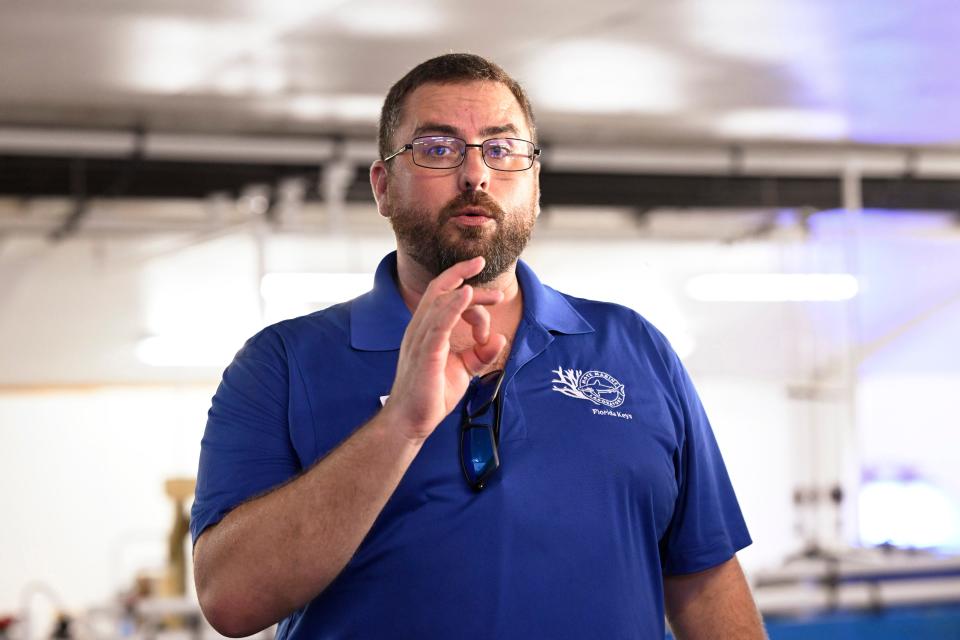
Pilot projects have shown that shortly after crabs are introduced at that density, “the algae cover drops very dramatically – an 85% reduction of macroalgae on many of these reefs,” Spadaro said.
While crabs can eventually reach six pounds or more, Spadaro said, the crabs bred in Sarasota would be about the size of a quarter when released on the reefs.
Between 100 and 300 adult crabs will take up residence in Sarasota, producing those 250,000 crabs annually to eventually graze algae on the reef.
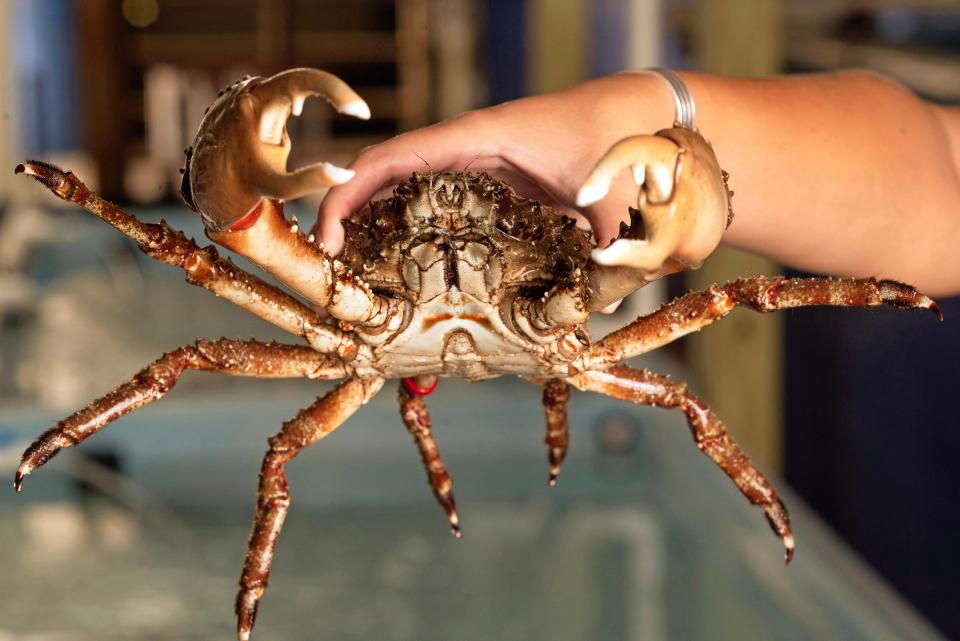
Spadaro said that’s really just a drop in the bucket, compared to what’s needed.
“So this system, we hope, will serve as a model that can be duplicated multiple times to actually increase the number that we’re putting out across the reef tract from Martin County all the way down to the Dry Tortugas over the next decade or two – which will obviously require many, many many times more than 2.5 million crabs.”
What’s next?
While coral scientists are still rescuing coral from the Keys, NOAA Coral Reef Watch Director Derek Manzello said in an email Monday that “Hurricane Idalia caused strong cooling of the entirety of Florida’s Coral Reef and pushed temperatures below the bleaching threshold for the first time since late June/early July.”
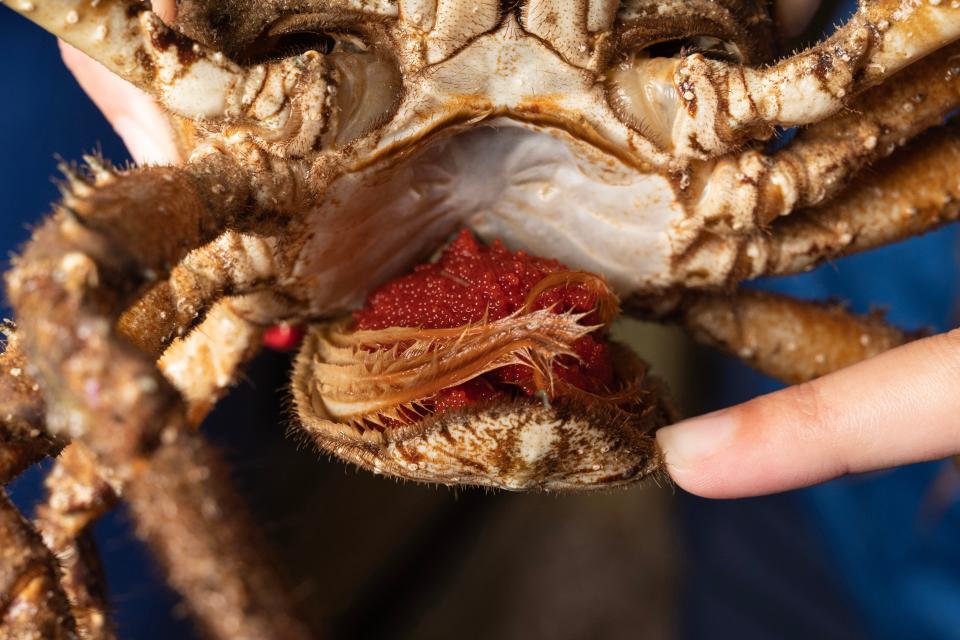
The storm cooled sea surface temperatures by about 1.7 degrees. Unless temperatures rise again, corals left in the Keys should start recovering, though he cautioned that following a Caribbean-wide bleaching in 2005, “most of the coral mortality in the U.S. Virgin Islands occurred due to a disease outbreak in the months after the heat subsided.
Dr. Erinn Muller, program manager for coral health & disease and senior scientist at Mote that Elkhorn and Staghorn corals recovering from the bleaching event could be returned to the offshore coral nurseries in November, when the Mission Iconic Reefs restoration effort could again ramp up.
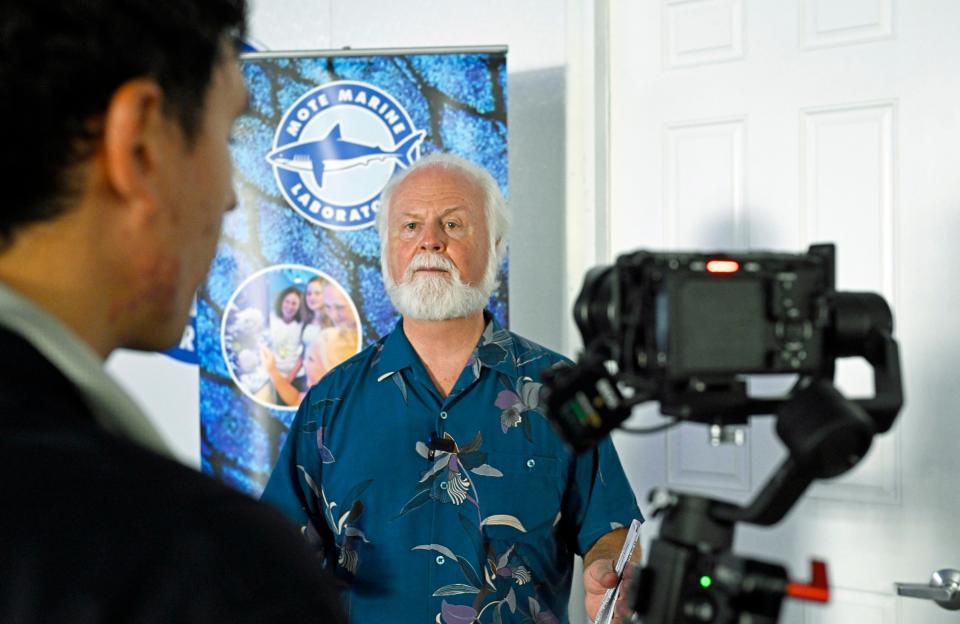
Mote has been working with NOAA and the Florida Fish and Wildlife Conservation Commission to develop a health certification process for the crabs before they can be introduced enmasse on the Florida Reef Tract.
Spadaro said that if that progress continues at the current rate, Caribbean king crabs could join the coral on the reefs as soon as December or January.
Related: Crabs that may help save Florida's iconic reefs will be born and bred on land
Earlier: Big Red (or his offspring) may one day help scientists restore iconic Florida coral reefs
This article originally appeared on Sarasota Herald-Tribune: New Mote crab hatchery viewed as a game changer for reef restoration

